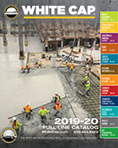Resolving and Avoiding Disputes
Best Practices For Resolving/Avoiding Disputes
Construction jobs involve diverse people, large sums of money, tools and heavy equipment, and deadlines: what could possibly go wrong? Disputes on the job are significant risks factors for contractors and can be an impediment to completing the project on time and within budget. The construction industry is prone to disputes, which is why knowing what can cause disputes and how best to resolve them—or avoid them in the first place—is vital for contractors and those working in construction industry to understand.
Disputes Are Global
According to the 9th annual Global Construction Disputes Report 2019 (by Arcadis), the global average value of disputes in 2018 was $33 million and the global average length of disputes was 17 months. In the United States, the average value of disputes has been steadily declining since 2014 to $16.3 million in 2018. In terms of the average length of a dispute in the US, it takes approximately 15.3 months to resolve, lower than the global average, but long enough to affect a project’s budget and timeline.
Report authors, Acadis, define a dispute as “a situation where two parties typically differ in the assertion of a contractual right, resulting in a decision being given under the contract, which in turn becomes a formal dispute.” According to the report the top three overall dispute causes are:
- Failure to understand and/or comply with contractual obligations by the owner, contractor or subcontractors
- Errors and/or omissions in the contract document
- Failure to administer the contract
Essentially, human factors, not technical ones, are the root cause of most disputes. In 2018, the highest value dispute was worth $2 billion (Arcadis). While most disputes won’t reach those levels, any money spent on dispute resolution affects the bottom line and takes away resources from projects and profits, not to mention potential hardship on any business.
Types Of Disputes
On-the-job disputes or conflicts arise through misunderstanding, unrealistic expectations, and/or lack of communication. Construction projects typically have a lot of moving parts and involve many people, so disputes of any size can curtail, or fully derail, ongoing efforts.
COMMON DISPUTES |
COMMON CAUSES |
| Poor contract administration | Contractor or subcontractor fails to understand or comply with contractual obligations |
| Payment issues | Disagreement on price resulting in lagging payment or lack of payment. Or developer/owner has cash flow issues. |
| Specifications; errors or omissions in designs | Unclear specifications or projects that are out of compliance, and do not meet or match specifications and expectations |
| Poor work quality | Inadequate quality standards that fail to catch mistakes or correct them in a reasonable timeframe |
| Lack of communication | Poor communication between all parties involved: investors, owners, contractors, subcontractors and/or workers |
Resolving Disputes
Despite good processes put in place or seemingly good will among contractors, an on-the-job conflict has still happened, what now? Inevitably a problem will arise that needs to be addressed. Some of the most effective steps to take include the following:
Act Quickly
Once the conflict rears its head, the clock starts on addressing it. Whether it’s a personal conflict between two crew members, a dispute on price or payment, or serious contract administration, acknowledging the problem and initiating its resolution are paramount.
Fact Find
There are at least two sides to every story. If it’s a personal dispute among people, get each person’s account separately and identify the core issue and any agreed upon facts. If the dispute is more contract-related, it will be important to get at the heart of the matter, engage the relevant people, and have a fundamental understanding of the contract and project at hand. Whatever the circumstances, it is vital to discover the facts of what happened and why.
Convene Parties
Once the main facts of the dispute are known, it may be time to sit down with the parties involved to hash it out. Convening disparate parties should not be done in the heat of the moment; give them time to cool down. Once cooler heads prevail, the hope is that the opposing sides can listen to each other. On issues of a larger scale or multiple parties, this may be done with a professional mediator or arbitrator.
Keep it Professional
Always try to keep it professional when engaging those involved. This may be a challenge at times, which is why getting the full story from all parties before attempting to resolve the issue is key. At its core, this is a work-related dispute, so try to keep anything personal out of the discussion.
Problem Solve
To find a solution that is acceptable to all parties, encourage compromise or collaboration. If compromise works the best, each party has to give in a little to come to a suitable resolution for all involved; essentially a negotiation. In collaboration, parties must come to a separate, alternative solution. Different disputes call for different solutions.
Avoiding Disputes
It goes without saying that the best way to handle disputes is to try and prevent them in the first place. The best way to deal with workplace or contract disputes is to structure teams and projects so that conflicts are minimized or avoided all together. Best practices for avoiding or preventing potential disputes altogether include:
Implementing Construction Software
Project management software helps organize project elements such as budget, communication, scheduling, ordering, decision-making, among others. Using software can mitigate or eliminate risk of conflict by keeping project-related data organized, trackable, and accessible.
Encouraging Teamwork
Fostering a sense of comradery among the crew and placing a premium on teamwork can be a critical element to avoiding disputes. Allowing everyone to be a stakeholder in the process is more likely to make the project itself a success.
Engaging Alternative Dispute Resolution
Conflict resolution measures such as mediation, arbitration, and party-to-party negotiation can help resolve issues by engaging a neutral party. Sometimes there may be fear or mistrust when bringing in a third party, however, a non-partial viewpoint may be what’s truly needed.
Adopting a Risk Management Mindset and Strategy
One of the best ways to avoid disputes is to adopt a risk management mindset on every job. Risk management is essential to successful project management and delivery; therefore, understanding the potential pain points and risk management trends can help alleviate or avoid disputes.
Overcoming Disputes
Disputes, conflicts, or disagreements on the job may be inevitable. However, there are many tools available for those in the construction industry to access either to manage conflict and dispute, as well as avoid it. And while some disputes may ultimately end in litigation, most affected parties agree that they want to steer clear of the courts to resolve workplace and project-related issues. The Global Construction Disputes Report suggests that parties seek to avoid formal litigation proceedings and are willing to try many conflict resolution techniques before resorting to litigation.





